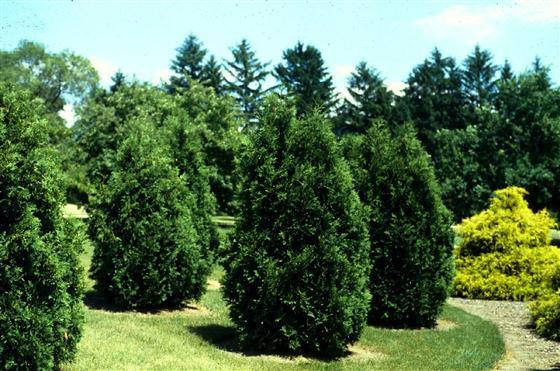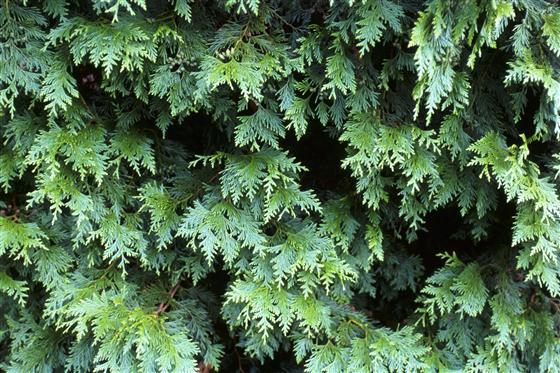Thuja occidentalis 'Nigra' is a compact, conical selection of eastern arborvitae with exceptionally dark-green foliage that retains good green color in the winter in cold climates. After 10 years of growth, a mature specimen will measure 6 feet (2 m) tall and 3 feet (1 m) wide, an annual growth rate of 6 to 8 inches (15 - 20 cm).
This is an rather old cultivar in the nursery trade that unfortunately is of unknown origin. It is thought to have originated in the USA in the 1930s. L. H. Bailey formally described it in his 1933 book, Cultivated Conifers in North America.

